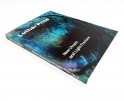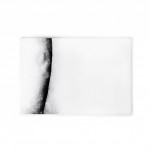Artists of Türkiye: Eren Sulamaci
This week artist and curator Mehves Lelic shares the work of artists making photographs in Türkiye (Turkey).
Eren Sulamaci is most interested in methods. In his explorations of wide-ranging subjects from the lives of digital files to the inexplicable and constant chaos living in a city like Istanbul might instill on its residents, he uses photography and the moving image as methods: the camera’s nature as a mechanism-designed device informs all of his choices. His work makes obvious immediately and critically that photographs are just rearrangements of pixels on a page, rather than truths. He is in search of new and more inclusive truths in his end products.
His latest installation project, Immediate Landscape, explores the head-spinning rate with which the metropolis changes, causing casual and sometimes absurd contrasts from one spot to another. The example Sulamaci gives is Bagcilar, a dense neighborhood in Istanbul (population: approximately 1 million, unofficially), that borders other equally dense working-class neighborhoods, with porous borders. With rapid and underscrutinized urban development projects, one side of this neighborhood’s main street might change abruptly, causing stylistic, socioeconomic, and architectural rift with the other side. Such incongruence, coupled with the pace of life in the metropolis, produces vertigo, a feeling Sulamaci wished to recreate in the installation. The viewer enters a dark room through a curtain and discovers that they are standing on a projection that depicts the bird’s eye view of a city neighborhood. The image is moving, creating the feeling that the ground is slipping under the viewer’s feet. It is true that a metropolis of Istanbul’s size can create this feeling, which is amplified by the viewer’s long shadow that falls on and obscures part of the projection.
Sulamaci’s interest in the bird’s eye view connects to a large tradition within art history. Dating back to the Classical period, bird’s eye views of cities and landscapes often placed the viewer in the role of an elevated observer. Seeing everything on and beyond a city block, unobscured by cars, buildings, and other structures, is an uncommon perspective for the Classical and the modern metropolitan dweller alike. The revival of interest in this mode of depiction in the 19th century was due to civic pride: people were celebrating the advancements in urban planning and technologies at this time. Sulamaci, however, uses it to overload the viewer with information – he states that he originally wanted the video to be so high quality that the viewers would be able to read license plates – rather than celebrate beauty and advancement. The images powerfully resolve into a feeling of confusion and disorientation for the viewer, one that many will recognize having moved through crowded city streets anywhere.
One of Sulamaci’s many gifts is reinventing his role and methodology as an artist in each project. Unafraid to move on completely from an earlier approach, he finds new ways to explore wide-ranging subjects at the crossroads of human and digital interaction, urban life, and the build and natural environments each time. He credits his multitudinous educational background for his ability to do this: he has degrees in electrical engineering and visual communication design, and he is currently working towards a PhD in the Photography Department at 9 Eylul University in Izmir, Turkey. Thus, it is no surprise that one of his first photography projects, completed for an assignment at school, is of the lives of family photographs. Responding to a prompt to complete “the most probable self-portrait of himself,” Sulamaci found family pictures of himself as a boy, and scanned and uploaded them onto an old hard drive. He then let the hard drive sit in the corner of the house for some time, trampled, moved around, and occasionally even dusted during a cleaning project. He then printed the corrupted photographs, which now were tinted with beautiful colors that look like machine abstractions. They are thoughtful odes to the permanence the digital realm has promised humanity, that is in fact no true permanence at all. Methodology is once again central to the experimentation and end result in his project: rather than interpreting a world through the camera, Sulamaci is interpreting the role of the camera in our personal, familial, intimate lives, and the origins of digitization.
Sulamaci credits his initial interest in photography because of family photographs like the ones that he corrupts for his Most Probable Self-Portraits series. One memory stands out for him: watching Super 8 footage of his grandfather, who passed away before he was born, he observes his family members so moved by his casual appearance in the video, peeling a tangerine and sitting at the table. The emotional response people have to seeing the likeness of a man who has passed away many years ago moves him to think about the power of photographs: their indexicality, sentimentalism, and capacity for interpretation. He embarks on an approach that is creative and artistic, and at times, truly humorous and engaging.
One work he produces later in his career are a collection of the backs of passport-sized photos he was asked to take as he was enrolling in mandatory military service, which most men in Turkey have to do. The military office requests 16 copies of the same photograph for paperwork, but inexplicably returns half of them to him. When he flips the images, he sees that each image has a stamp from various military officials as his paperwork moved through various offices. He flips the photographs and frames them together, as a collection of stamps. Critically, he has no other copies of the photographs, and thus has no recollection of what he looked like in the image. Exploring the comical, redundant nature of bureaucracy, its contrast to the purported discipline and prestige of the militarized state, and the passport photograph as a formal and identifiable representation of the self, he yields an unassuming experiment. Central to the exploration is the intentions of the artist as well: by reversing the artistic surface from that of the photograph to its back, he creates intention that viewers often might overlook in photographic works.
Sulamaci is a collaborator at heart: many of his projects involve another artist or writer with whom he embarks on a fruitful creative conversation. In Tortu/Residue, he begins a visual conversation with his studio neighbor Didem Erbas, a multimedia artist. Choosing a remarkably ekphrastic poem by Paul Celan, the pair make works that respond to each other’s works formally, intuitively, and/or content-wise. The resulting aesthetic is that of the dark undercurrents of complete cycles of nature: entangled branches, a wave at its peak, roots barely discernible in dark soil. Exhibited as a close grid in sizes ranging from 8×10 inches to 6+ feet, the project lets the viewer get close and pushes them away at various points, creating an insecure spectatorship.
Sulamaci’s ability to subvert photographic methodology makes each of his projects an a-ha moment, and a conversation between what photography does and what it is thought to do. Transcending the two-dimensional or projected surface of the image, he is exploring conceptual relationships between the sign, the signifier and the viewer rather than physical photographic objects. His journey has been wide-ranging, and I am excited to see what is next.
Instagram:@muhisu/
Mehves Lelic is an Istanbul-born artist, curator and educator based on the Eastern Shore of Maryland. In her work she ponders modernity and heritage, belonging, and the resulting relationship with the environment. She is an Assistant Professor of Art and Art History and the Director of Mosely Gallery at the University of Maryland Eastern Shore. She holds an MFA from Bard College and a BA from the University of Chicago.
Lelic’s photographic work has been exhibited internationally in venues such as the Virginia Museum of Contemporary Art, Rotterdam Photo Festival, PhotoNOLA, Filter Photo Chicago, the Ogden Museum, Institute of Contemporary Art Baltimore, Cosmos Arles France, the Photographers’ Gallery Istanbul, and others. Her work has been published in the National Geographic, GEO Magazine, Ain’t Bad, Lenscratch, C41, Aesthetica and Der Greif. She has been awarded the National Geographic Expeditions Council Grant, the City of Chicago Individual Artists’ Award, the Turkish Cultural Foundation Cultural Exchange Fellowship, the Association of Art Museum Curators (AAMC) Conference Fellowship, and the ArtTable Faith Flanagan Fellowship.
Lelic previously served as Curator and the Head of the Curatorial Department at the Academy Art Museum in Easton, Maryland and has curated and organized over 20 exhibitions, including Spatial Reckoning: Morandi, Picasso, and Villon (2023); Laura Letinsky: No More Than It Should Be (2023); Marty Two Bulls, Jr.: Dominion (2023); In Praise of Shadows: Jun’ichiro Tanizaki and Modern and Contemporary Works (2023); Mary Cassatt: Labor and Leisure (2023); Fickle Mirror: Dialogues in Self-Portraiture (2022); Jackie Milad: Vestige (2022); Norma Morgan: Enchanted World (2022); The Movable Image: Video Art by Collis/Donadio, Shala Miller, and Rachel Schmidt (2022); Hoesy Corona: Terrestrial Caravan (2022); and On Water (2019).
Instagram: @mehveslelic/
Posts on Lenscratch may not be reproduced without the permission of the Lenscratch staff and the photographer.
Recommended
-
Earth Week: Casey Lance Brown: KudzillaApril 25th, 2024
-
Earth Month: Photographers on Photographers, Dennis DeHart in conversation with Laura PlagemanApril 16th, 2024
-
Luther Price: New Utopia and Light Fracture Presented by VSW PressApril 7th, 2024
-
Artists of Türkiye: Eren SulamaciMarch 27th, 2024
-
European Week: Sayuri IchidaMarch 8th, 2024









































































